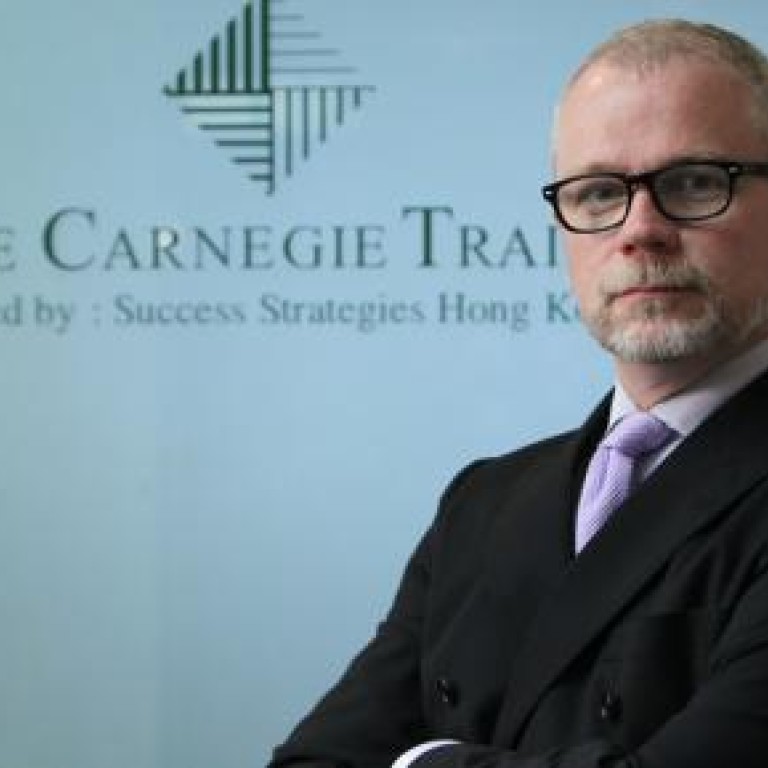
Last Week in Viral News
The week in weird.
When Dale Carnegie delivered his first course on public speaking in 1912, he could scarcely have dreamed that it could be so widely diversified and remain so influential in such depth a century later – and beyond.
To date, the “Dale Carnegie Training” trademark boasts more than 300 individual and customised modules for corporates, as well as a series of public classes for individuals, covering areas including leadership development, inter-personal skills, sales effectiveness, human resources management, team member engagement and process improvement in no fewer than 80 countries. In addition, its more than eight million graduates around the world include employees of 425 Fortune-500 corporations.
According to Mark Cosgrove, director of instruction for Success Strategies Hong Kong – which provides official Dale Carnegie Training courses – human relations, the art of how to react to one another, is the key element in Carnegie’s teaching, and what makes it so successful.
“One hundred years ago, Dale Carnegie started teaching presentation skills. Then he realised the problems people were having were not just about talking or about using their voices – that was all there. The problem was that they fundamentally didn’t know how to communicate with each other. So he looked at how we are related to each other very closely, writing books and courses to guide people on how to build a good rapport, establishing trust and reliability with others, to influence them, and ultimately engage and lead them.”
Cosgrove says that “high impact presentations” and “leadership training for managers” are the most popular public classes for executives in Hong Kong at present. “As Dale Carnegie’s foundational course, the presentation [course] works with people intensely over two days to create a fundamental change in their ability to present information – be it self-confidence, the ability to be clear and precise, deal with high-pressure situations, and so on. When it comes to presentation or making a public speech, it is not just what we are saying that people are examining, but how we say it, and how we look while saying it.”
Explaining the flexibility and diversity of the course, Cosgrove says that for junior-level staff, the module is focused more on PowerPoint presentations, whereas for senior executives, the course can be tailored to include more about the techniques of making presentations to international colleagues, to head offices overseas, the media or shareholders.
As with other Dale Carnegie programmes, the presentation course adopts a “four-phase cycle” approach – attitude, knowledge, skill and habit – that highlights practice.
“What happens normally is that people fall into the knowledge trap. For example, if you ask how many people [in the class] think they know how to lose five pounds in weight, most will say ‘yes’. But if you ask how many of them have ever achieved that, there’d only be a few. So the question is never the knowledge; what matters is practice, doing what you know how to do,” explains Cosgrove.
In the two-day class, every student is required to do seven presentations under the “live” coaching of a trainer, with each presentation being videotaped. “After the presentation, they go into another room and watch the video with another coach. It is where they can learn the right things from the coach, and from themselves. Then we will make them practise. This is how our approach works and the result is always phenomenal,” Cosgrove says.
Warren Buffett, CEO of Berkshire Hathaway – the US multinational conglomerate holding company – is a graduate of Dale Carnegie’s presentation course.
In the “leadership training for managers” course, also popular in Hong Kong, 70 per cent of the time in class is spent on interactive activities, 20 per cent on discussions and facilitations, with the remainder devoted to knowledge transfer.
“We don’t spend much time on delivering knowledge as we are involved in ‘adult education’ and adults can’t be lectured. Imagine how participants – mainly managers and executives – will react if I ask them to sit there for two hours and listen. They will most likely be busying themselves with their BlackBerrys and iPhones. So instead, we create an environment for them to interact with and learn from each other,” Cosgrove says.
“Again, the focus is on human relations, stopping them from becoming bad managers, who, to me, are those authoritarians who are hard to work with, imposing their will on others instead of engaging people to work for them, and not using their value. Remember this: usually people don’t quit because of the money – they quit because of the management.”

